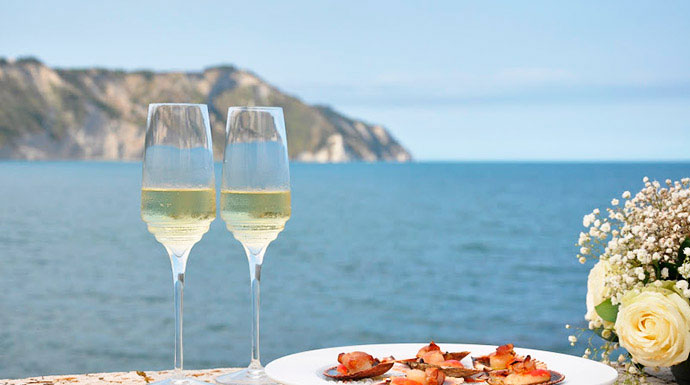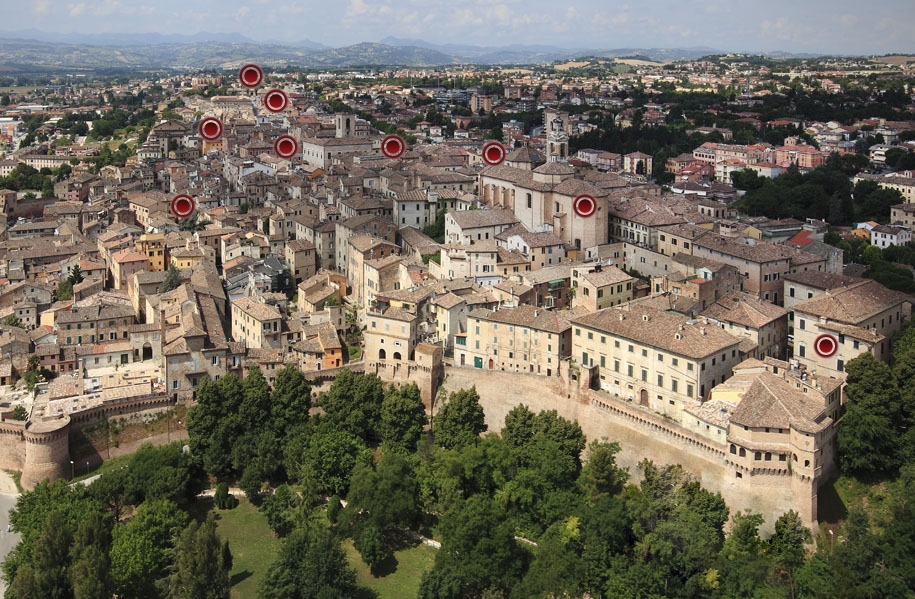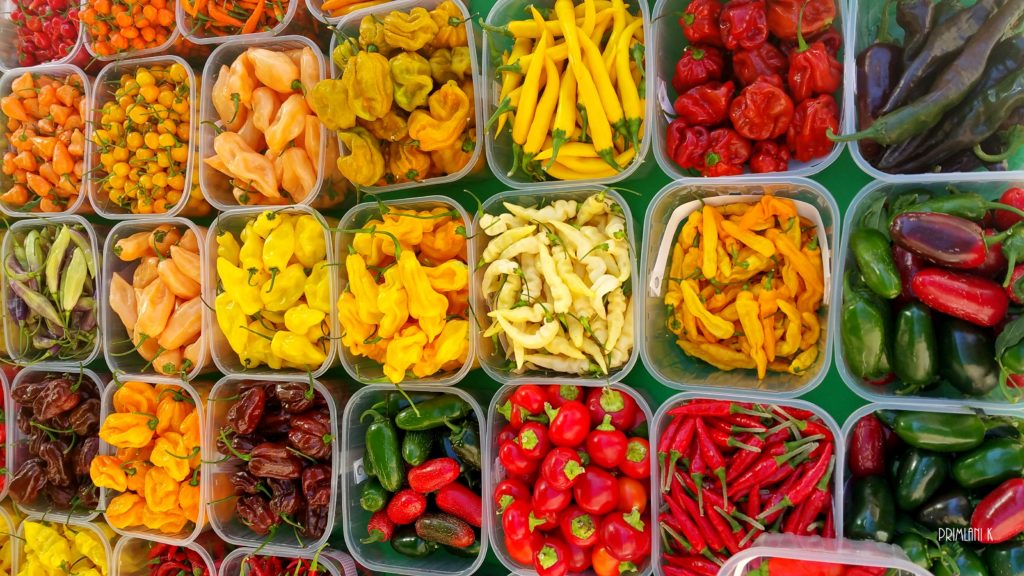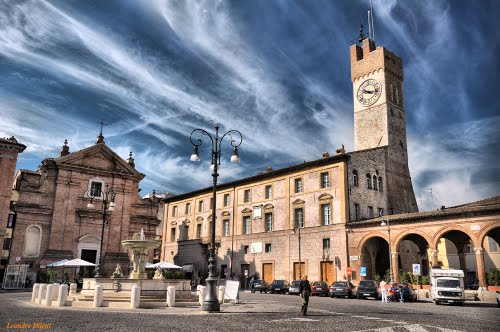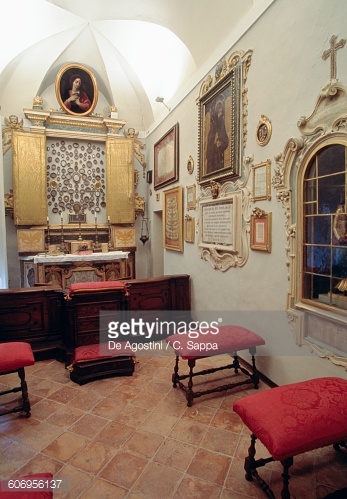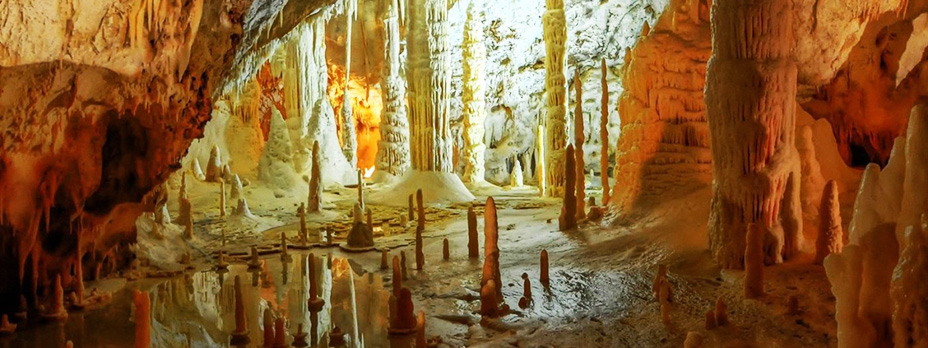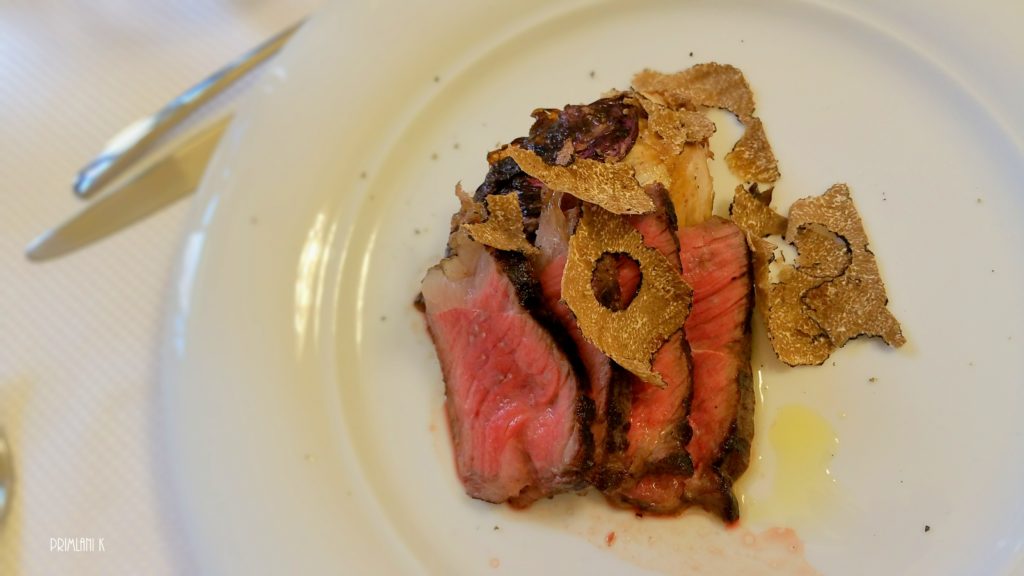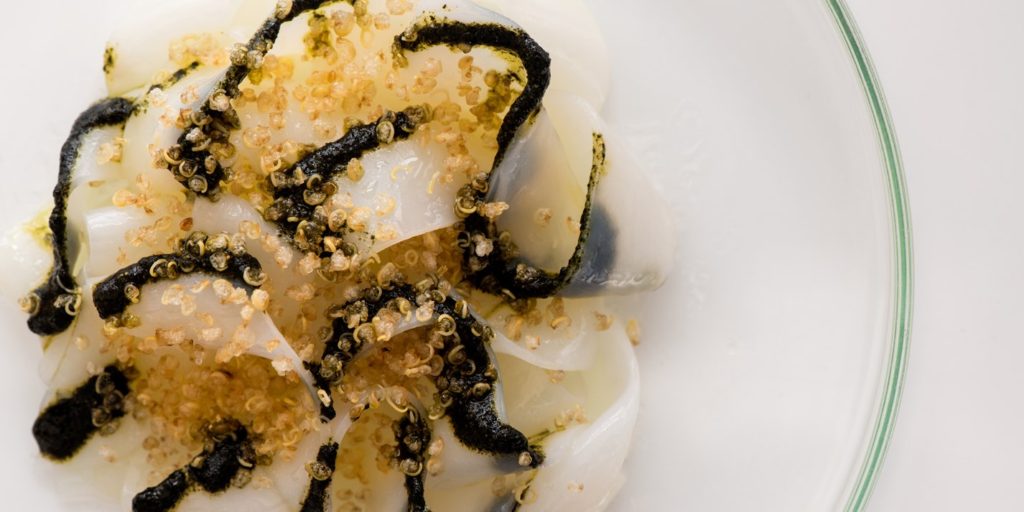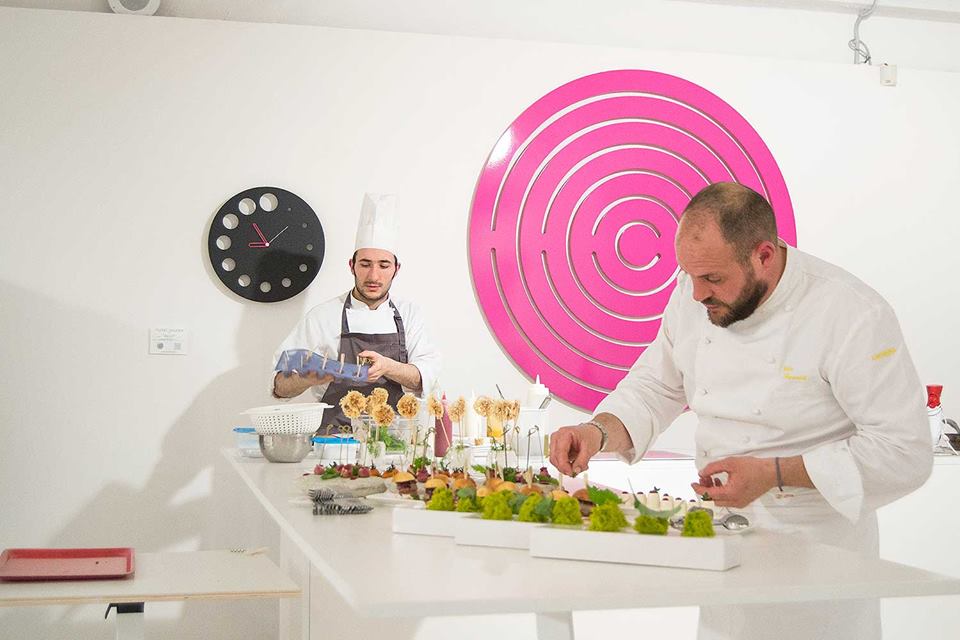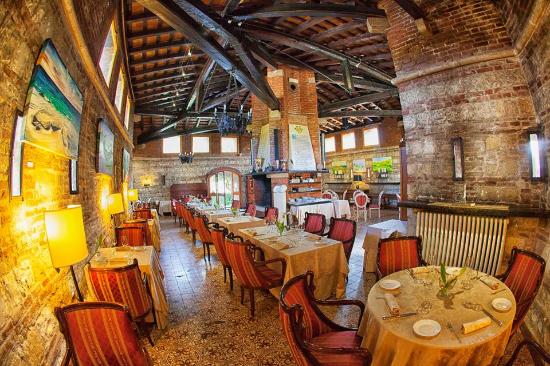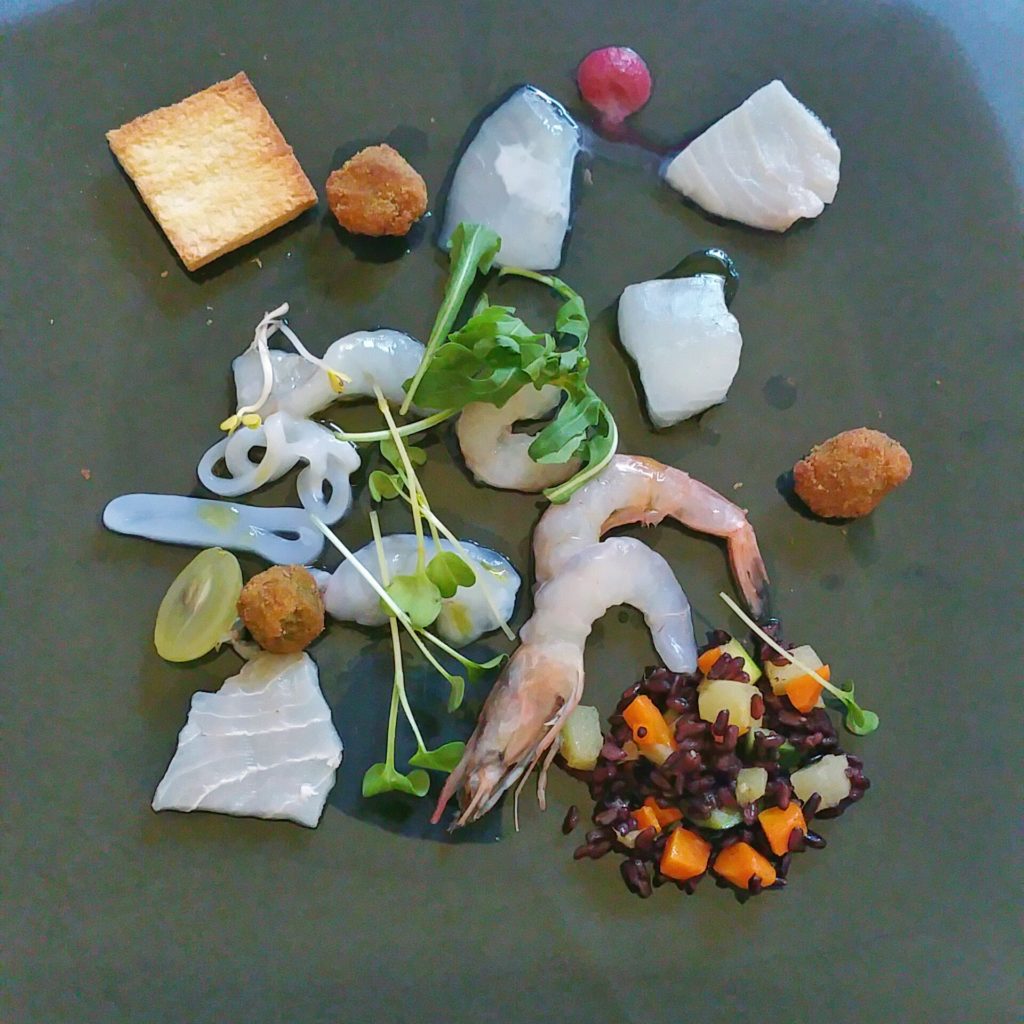All roads lead to Rome, in our case “wine”. Our insatiable quest and love for Italy and all things Italian leads us off the beaten path to the land of Italy’s noble native white varietal Verdicchio – Le Marche. Pronounced ‘Lay Markay’, roughly the size of Delaware, this Italian province aptly translates “the borderlands”, hugs the Adriatic Sea to the east with a 111-mile-long coastline and stretches of unspoiled countryside extend into Emilia-Romagna to the north, Tuscany and Umbria to the West, and Abruzzo and Lazio to the south.
Jesi and Matelica, Marche’s two principal Verdicchio-centric DOC towns. While Jesi is timeless, Matelica a confluence of cultural roots and new age ideology. Both undiscovered and untouched by the throngs of tourism.
Jesi: The heart of Jesi lies inside the one and a half kilometer stretch of pristinely preserved fort walls. A larger than life statue stands tall, a reminder of the birthplace of the revered Emperor, Fredrick II of Hohenstaufen. Like a town on an interminable holiday with it’s sleepy citadels, a leisurely walk amidst the starry eyed citizens and their beloved pets unravel the lingering energy of it’s town. People stroll, stopping to marvel, like me, or to purchase the colorful gamut of local peperoni showcased at the local peperoni street festival.
Exploring new places with a local is the best gift you can give yourself. A guided tour – a history lesson, a nature walk, a museum lecture can uncover a world of wonder. And if you find yourself in Jesi on the weekend, immerse yourself in a cultural crash course by breaking the language barrier with the local residents over a glass of refreshing Campari Apertivo or the joy and pride of Le Marche – a lively Verdicchio dei Castelli di Jesi. At a glance, life in Jesi life might be simple, sweet, and slow, but Jesi is famous for nurturing a surprising number of Olympians and soccer rock stars. This sleepy town of Jesi has won more medals than the country of Portugal in fencing, soccer, skating, and even motor cyling.
Matelica: Cradled by the snow capped Apennine range, rich in history and heritage, Matelica is best appreciated through the discerning eyes of an art historian and the Mayor of Matelica – Alessandro Delpriori. Catch an Opera performance at the Piermani theatre crafted in 1805 by renowned architect , peculiarly also housing an antiquated Roman bath under it’s musical feet. Across the street, time stands still at the 18th century palace of the aristocratic Piersanti family, today open to the public as a renaissance Museum. Piermani theatre also houses the Enoteca Comunale showcasing twelve Matelica Verdicchio wine producers. History buffs should head over to Palazzo Finaguerra, the recently restored Civic and Archaeological Museum.
One couldn’t possibly discuss art in Marche without mentioning the “renaissance war-lord” – Federico da Montefeltro (7 June 1422 – 10 September 1482), singularly responsible for commissioning the largest library outside the Vatican, including supporting the formative years of painter Raphael, a leading figure of High Renaissance classicism, best known for his “Madonnas,” including the Sistine Madonna and figure compositions in Rome.
What makes Matelica particularly disarming is unlike the yuppies of the west, who voluntarily deluged, surrendering tradition for consumerism, the champions of change, the younger generation of Marchiagni (Marche natives) confidently wear their cultural identity as a comfortable cloak while crusading the region onto contemporary stature.
A 30 minute car drive from Matellica, Indiana Jones meets Star Wars in the jaw-dropping Caves of Frasassi discovered by a group of Italian speleologists in 1948. Extending over 13 kms is an unhindered and uncontaminated work of 1.5 million years by nature creating a labyrinth of stalactite and stalagmite formations in a myriad of colors, shapes, and sizes.
For an even deeper understanding of the soul of a Marchigiano, one must drink Verdicchio, every style from dry to sweet to sparkling. It’s liquid gold they have perfected, perhaps as early as the eighth century.
Speaking of which, in the EU (European Union) the accolades for the highest number of PDO products, not surprisingly belongs to Italy, with France a close second. Three EU schemes known as PDO (protected designation of origin), PGI (protected geographical indication) and TSG (traditional specialty guaranteed) that encourage diverse agricultural production, protect product names from misuse and imitation, and provide consumers information concerning the specific character of the products.
The most frequently recognized Italian PDO products are fruits and vegetables, followed by extra -virgin olive oil, cheese and dairy products, and lastly perhaps the most famous transplant of all meats (cured and fresh meat).
Carpeted with farmed land, Le Marche is mostly an agricultural region. The widely exported cattle of choice and Marche’s native breed is Marchigiana adorns the plate in many forms, local’s favorite style remains charcoal-grilled. Embellished with local truffles, we were squealing in delight. Unlike Piemonte and Umbria, Marche produces wallet-friendly truffles. (Michelangelo and Pope Clement XIV’s preferred choice of cheese – Casciotta d’Urbino, is a semi-soft Caciotta cheese made with a combination of sheep and cow’s milk. Other regional cheese specialties include Pecorino, especially young pecorino, and Trench’ cheese deriving it’s name from the ripening process in circular trenches dug out of the tufa subsoil for 80 – 100 days shared with the bordering village of Sogliano al Rubicone in Romagna.
Like prosciutto di Parma (Parma), prosciutto di San Daniele (Fruili), Marche produces the rich, whisper-thin Prosciutto di Carpegna San Leo DOP, a regional specialty of the Pesaro Urbino region, sadly, hard to find in the U.S. In fact, from the mid ’50s to 1990, Italian prosciutti were not legally imported into the U.S.
Ciauscolo Salame made from the prized loin of pig, juniper scented, speckled with black pepper and garlic, slathered on a crusty Marceta loaf is a humble reminder of the joys of Italian Charcuterie. A glass of Stefano Mancinelli’s perfumed Lacrima Di Morra d’Alba in hand, it is an unforgettable moment. Marche’s long history of cured meats is tied with the sharecroppers, who were pros at utilizing almost every part of pigs raised on mash and acorns. Cacciatore salame, an ideal partner for travel is cured with the usual suspects spices, wine, garlic, and herbs.
In Italy one couldn’t throw a stone without hitting a grape vine or in our case an olive tree. The tender green-tinged Ascolan olive can be devoured fresh, pressed into an ubiquitous olive oil, an essential tool in any cook’s arsenal, or like the Ascolini families stuffed, lightly fried, and served as fritti to the likes of Rossini and Puccini. Once a fortress town, Cartoceto‘s fame dates back to 1178, for olive oil production pressed from the Leccino, Frantoio and Raggiola olive varieties, which must make up at least 70% of the groves.
When it comes to Michelin Stars – the Rolls Royce of haute cuisine, Italy is a major player with over 300 restaurants holding either one, two or three stars. The gods of food and wine were certainly smiling on us, or in this case Dr. Ian d’Agata and Filippo Taricco. Chef Maura Uliassi transformed his modest beach front café Uliassi in Segnalia into one of Italy’s top twenty restaurants, Mauro including laurels for two Michelin stars. Chef Uliassi seduced us with a sensational five-course meal confidently flaunting his culinary mastery ranging from a clever modern rendition of Squid “tagliatella”; Potato Fondant with black truffles and Mazzancolla prawns, we licked our bowls squeaky clean; Aunt Elena’s Cappelletti with butter, sage, and white truffles, after all a girl can never have enough truffles!!; beautifully seasoned Turbot with fennel puree and snails; ending with the Uliassi Fashion Tiramu….su. I can only imagine the spectacular show Chef Uliassi would fabricate in the comforts of his own kitchen, surrounded by his trusted toys and geeky culinary gizmos.
Cooking in the Marche is deeply rooted in peasant tradition where both the professional chef and your humble home cook strives to recreate their nonna’s soul satisfying concoctions. And if there is one chef in Marche who can transform even the humblest cut of wild game into avante-garde dishes, it’s the Michelin Star Chef Errico Recanati of Ristorante Anderina in Loreto. Reinventing local ingredients and traditional Marche dishes into deeply savory, tantalizingly aromatic, and texturally-savvy delightful dishes that seamlessly link the past (grandmother Anderina’s cuisine) and the opulence of modern-day cooking. Bravo! Chef Errico. Our gastronomical extravaganza hosted at the breathtaking hilltop estate of La Monacesca, one of the premier producers of Verdicchio di Matelica, is a decadent memory etched in our hearts for years to come.
Straddling the Adriatic Sea, Le Marche equally enjoys it’s share of bounty from the sea. Seafood connoisseurs must visit Port Nuovo beach to soak in the limitless expanse of the calm gray-green Adriatic and devour spectacularly fresh sea creatures at the seafood-centric Ristorante Fortino Napoleonico. Tje restaurant occupies coveted space at the luxury hotel Fortino Napoleonico, a fort in it’s previous life, build in 1808 by Napoleon’s Italian Viceroy to fight off English ships. Served crudo, grilled, or cooked in style of potacchio (onion, tomato, white wine, & rosemary), one can savor every local seafood variety including the sweet Moscioli (wild raised local mussels), sardines, sole, bream, and clams and some superb fritti. You get the point.
Chef Gianni Giacani of Hostaria Santa Lucia skillfully crafted a six-course “Al Largo Del Conero” (off the conero coast) themed lunch to showcase the versatility of Marche’s prized green jewel – Verdicchio grape.
Do yourself a favor friends and embrace your wild side. Skip the grid and explore Le Marche, which presently is in a sweet spot where old ways prevail but new riffs are keeping things exciting. It’s like discovering an entirely new Italy — or at least an Italy that is only populated by Italians.
Our outstanding weekend excursion was made possible thanks to Dr. Ian d’Agata in collaboration with the Istituto Marchigiano di Tutela Vini and wine producers, President Mr. Antonio Centocanti, Enologist Alberto Mazzoni, Food Brand Marche – Commune di Jesi, TreVali Cooperlat, BovinMarche, MarcheBio, Consorzio Frasassi, tour operator Esitur, and UBI Banca Populare di Ancona.
Special shout-out to the thoughtful Ms. Giulia and Ms. Federica of Collisioni Vino who slaved tirelessly for days, perhaps weeks, for ensuring a seamlessly smooth voyage for our wine motley crew.
Stay tuned as we dive into the two DOC wines Verdicchio dei Castelli di Jesi and Verdicchio di Matelica produced in the provinces of Macerata and Ancona, in our upcoming publication.
B-Roll of Ristorante Fortino at Porto Novo.
About Author
You may also like
-
Do You Speak Wine? This is Wine Vocabulary 101.
-
My Favorite Person in Wine
-
Education Matters More than Ever! Here’s How Wine Institutes are Coping with Coronavirus! #wine
-
What Makes a Good Wine….Good? #wine
-
First Look at the Trials & Tribulations Facing Orlando’s Local Independent Restaurants During the Covid-19 Pandemic. #orlando
